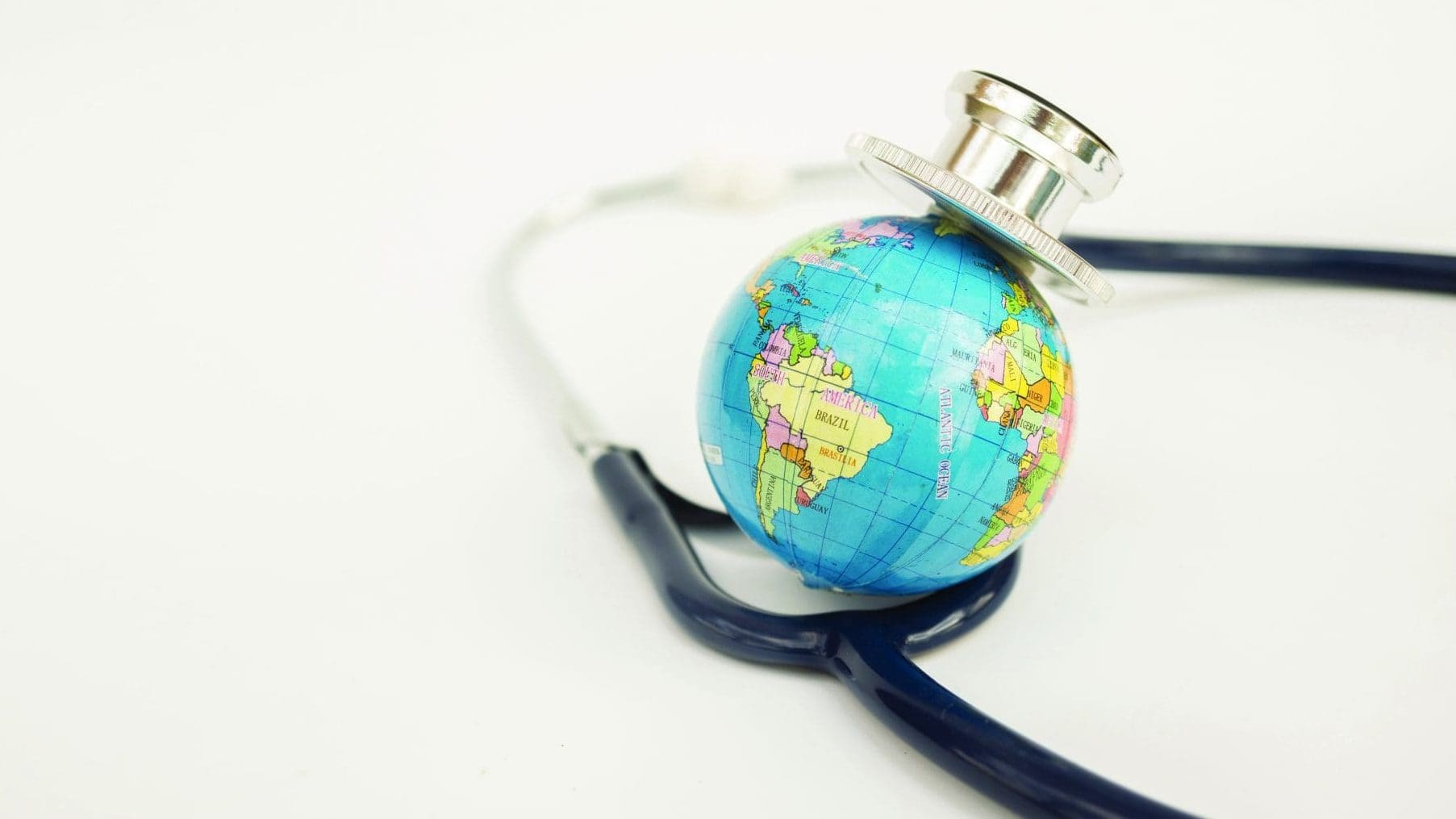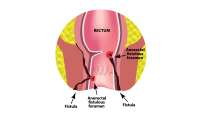COVID-19 continues to impact health around the world.
- Mental health disorders and substance use increased as a result of social isolation and fear during the pandemic.
- The COVID-19 virus’s inflammatory response aggravated existing cardiovascular disease, triggered blood clots; reluctant to seek treatment and exposure, patients died more frequently outside of hospital.
- Transmittable respiratory infections decreased during pandemic as a result of social distancing and masking.
- Delayed cancer screening during the pandemic may result in an increase in new cancer diagnoses.
- Health risks associated with climate change are expected to increase significantly.
The World Health Organization (WHO) remains concerned about several global health issues, but its focus has shifted since the COVID-19 pandemic. The coronavirus and its consequences have led to the most dramatic impact on global health in our lifetime. Concerns topping the WHO priority list include mental health, cardiovascular disease (CVD), respiratory illness, cancer, and diseases related to climate change. The pandemic had an impact on all of these health issues.
Mental health
Mental health, a human right, is essential to functioning and overall health. Many effective and practical approaches exist to protect, promote, and restore mental health. However, not all healthcare systems around the world can meet these needs. The WHO continues to develop global action plans to address mental health, develop effective leadership in the field, and advance improved methods to share evidence-based resources. That focus has sharpened since the pandemic.
A warming planet and human health
Mental health illnesses affect behaviors, thoughts, and moods; they frequently require professional intervention. Mental health conditions present challenges to managing day-to-day tasks, interfere with work or school duties, and impair relationships and self-care. They also add stressors to households, families, and communities.
According to the WHO, one in eight people worldwide live with a mental health disorder. The numbers are even higher in the United States. According to the National Alliance on Mental Health, one in five adults in the United States experiences mental illness in a given year. People who live in mid- to high-income countries have more access to diagnosis, so we expect higher numbers.
Mental illness doesn’t have a single cause. Several risk factors increase incidence, including chronic medical conditions, childhood experiences, biological factors and genetics, the use of alcohol or drugs, and feelings of loneliness or isolation.
Many serious mental illnesses are lifelong and can prove debilitating. Schizophrenia, for example, has a lower prevalence than other mental disorders, but it has one of the highest Global Burden of Disease (GBD) scores because of its unrelenting and invasive symptoms, difficult management of medication side effects, and pervasive stressors on family, finances, community, and physical health. Data used to calculate GBD include disability-adjusted years of life lost and the burden of living with the disease. (See Worldwide health trends.)
Worldwide health trends
The Global Burden of Diseases, Injuries, and Risk Factors Study (GBD) 2021 analyzes worldwide health trends, with an emphasis on the impact of the COVID-19 pandemic. Highlights from the study include the following:
Pandemic impact
- The COVID-19 pandemic caused the most severe drops in life expectancy in over 50 years.
- Locations hardest hit by the pandemic include Mexico City, KwaZulu Natal and Limpopo provinces in South Africa, Peru, and Bolivia.
- COVID-19 disrupted many health improvements around the world.
- The pandemic interfered with declines in the burden of global disease.
Areas of concern
- Policy interventions haven’t addressed many health risk factors, including high body mass index, high blood sugar, ambient air pollution, drug use, and high temperatures.
- Diabetes and kidney disease continue to rise around the world.
- By the middle of the 21st century, most countries will experience below-replacement levels of fertility (fewer than 2.1 children per person who can give birth).
Encouraging trends
- Child mortality continued to drop during the pandemic.
- Since 1990, global life expectancy has increased as a result of reduced mortality rates associated with diarrhea and lower respiratory infections.
- Many countries have reduced exposure to childhood and maternal malnutrition, household air pollution, and unsafe water, sanitation, and handwashing.
Source: Institute for Health Metrics and Evaluation. Global Burden of Disease 2021: Findings from the GBD 2021 Study. May 16, 2024. healthdata.org/research-analysis/library/bal-burden-disease-2021-findings-gbd-2021-study
Although no one mental health treatment works for everyone, individuals can choose a combination of therapies (such as online or in-person support groups, education sessions, individual therapy, and family support services) and medications (including medication management assistance) that work best for them. However, many countries have limited or no services.
Because mental health influences emotional, psychological, financial, social, and physical health, it requires a holistic approach. Individuals experiencing depression, for example, have a significantly increased risk of physical health problems such as hypertension, heart disease, and diabetes.
Pandemic impact
The COVID-19 pandemic resulted in a worsening of global mental health. A scientific brief by the WHO revealed that the global prevalence of anxiety and depression increased by 25% in the first year of the pandemic. Explanations for the increase include unprecedented stress as a result of social isolation. Many found it challenging to work, adapt, seek support from loved ones, and engage in their communities.
According to Melchior, children and adolescents present the most concern post-pandemic. The global mental health of youth hasn’t improved, and evidence indicates increased suicide attempts and self-harm. Melchior suggests that this enduring anxiety and depression may result from increased levels of child abuse during the pandemic (which has left lasting effects or may continue); parents’ continued stress, anxiety, or depression; and limited social interaction and increased screen use. Limited child and adolescent healthcare services exist globally. For example, Melchior reports underfunding in Europe.
Many with severe mental illness are of low socioeconomic status, are unhoused, have a higher risk for infection, or have limited education. All of these factors present challenges to accessing care, which was further impaired by the pandemic. Kowalski and Misiak report an association between schizophrenia and the highest risk of severe or fatal COVID-19 infection.
The pandemic collided with the opioid crisis. Those experiencing substance misuse before the pandemic had a higher risk for developing COVID-19 and had poorer health outcomes when infected. Drug overdose, suicide, alcohol use, and addictions rose dramatically during the first months of the pandemic when people experienced the most stress and isolation. According to the WHO, overdose deaths increased by almost 30% over reports before the pandemic. More current numbers, which are being gathered now, will allow us to see if substance misuse has returned to pre-COVID-19 levels. Fortunately, many countries offer methadone and other treatments.
Germaphobia and COVID stress syndrome (characterized by a fear of infection and fear of touching objects, surfaces, or people) has increased. According to Taylor and Asmundson, this occurs most commonly in people who had anxiety before the pandemic.
The mental wellness of healthcare workers remains a concern as the trauma of providing care during the pandemic endures. Burnout, distress, and a shortage of healthcare workers continue.
The pandemic did have some positive outcomes on mental health. Online physician and therapy contact became normalized, which led to increased flexibility and access to support, which continues.
Worldwide initiatives now exist to collect relevant data regarding the impact of COVID-19 on mental health and to consider approaches to mitigate the effects. Since the pandemic, the WHO has worked to promote the integration of mental health and psychosocial support within all aspects of the global response.
Cardiovascular disease
CVD describes a group of disorders that present the leading cause of death globally. It most commonly includes heart attack, stroke, and hypertension, as well as atherosclerosis, arrhythmia and valve issues, and rheumatic heart disease. The WHO reports that one in every three deaths worldwide results from one or more CVDs. Low- and middle-income countries experience the highest CVD death rates.
A focus on reducing obesity, addressing an unhealthy diet and sedentary lifestyle, and avoiding tobacco and alcohol can prevent most CVDs. Globally, one in 13 people live with a CVD, and contrary to common belief, women have a higher rate of these conditions than men. Women tend to delay treatment because of this fallacy.
The American Heart Association reports that nearly half of adult Americans have atherosclerosis, hypertension, or some other form of CVD. These numbers are high, but Americans also are more likely to have been diagnosed and be receiving treatment than those living in many other countries.
CVD develops as a result of an inflammatory process. For example, arteriosclerosis results from inflammation that swells and blocks arteries, not from the passive collection of cholesterol plaque, as previously thought. Inflammation involves a complex cascade of chemicals and cell response, which is essential to healing, but can prove maladaptive when chronic inflammation leads to tissue injury.
Pandemic impact
COVID-19 directly and indirectly influences rates of CVD. We now understand that the virus triggers clot formation and inflammation. According to the National Institutes of Health, individuals with existing inflammation of the cardiovascular system were hit hardest by COVID-19; they experienced higher mortality rates and CVD diagnoses. Patients with pre-existing inflammatory conditions, especially diabetes and hypertension, had an increased risk for death from COVID-19. The virus also left behind damage to the cardiovascular system of many who didn’t have pre-existing cardiovascular conditions. In 2023, according to Woodruff and colleagues, CVD rates remained higher than before the pandemic, and concerns exist that the previous decade of progress on reducing CVD has been lost.
A 2022 study by Rasmi and colleagues reported that between 20% and 40% of patients who tested positive for COVID-19 and were admitted to the hospital had an elevated cardiac enzyme troponin, a significant risk factor for in-hospital death, ventilation, and severe disease. The study also showed that individuals with COVID-19 who came into the hospital with elevated ST-segmentation on ECG, and were Black, Hispanic, or Indigenous, and had pre-existing diabetes, had the highest risk for death. Interestingly, those with COVID-related elevated ST-segmentation showed none of the expected obstructions on imaging.
Many patients with COVID-19 developed a spectrum of cardiovascular complications, even without pre-existing CVD. These complications included thrombosis, emboli, large vessel stroke, myocardial infarction, circulation issues, cardiogenic shock, and myocarditis. Myocardial injury, seen early in the pandemic, was reported in over 25% of hospitalized patients with the virus. Researchers continue to study the long-term impact.
Several indirect consequences of the pandemic increased the incidence of poor outcomes for patients CVD, such as missing in-person doctor’s visits during lockdown, deferral of elective procedures, and canceling needed assessments or procedures because of the fear of contracting the virus in the hospital. During the pandemic, emergency department and CVD admissions decreased and cardiac arrest out of the hospital increased, resulting in delayed care and poor outcomes. In addition, the incidences of CVD death rose. The combination of delayed care, increased severity, and enduring inflammation keep post-pandemic CVD rates high.
Respiratory disease
According to the WHO, chronic respiratory diseases were the third leading cause of death globally in 2019 (before the pandemic). The most common chronic respiratory diseases include asthma, chronic obstructive pulmonary disease (COPD), asbestosis, cancer, and tuberculosis (TB). Acute respiratory illnesses of most immediate concern include COVID-19, respiratory syncytial virus (RSV), pneumonia, and influenza. Children under 5 years are most vulnerable to respiratory illness, and lung disease is their most common cause of death.
COPD, a major global health problem and the third leading cause of death worldwide, results in obstructed airflow from the lungs and leads to difficulty breathing, wheezing, coughing, and the production of increased mucus. According to the WHO, more than 75% of people with COPD live in low- to middle-income countries.
Both indoor and outdoor air pollution and smoking significantly contribute to COPD. Risk factors for the disease include early childhood respiratory infections, preterm birth, low birth weight, and TB. Individuals with COPD have a four-to-six-fold higher risk of developing lung cancer compared with the general population. This population also has more cardiovascular risk factors, such as smoking, obesity, and hypertension.
Asthma, a prevalent lung disease that affects the airways of all age populations, leads to constriction, shortness of breath, and inflammation.
RSV primarily effects children under age 5 years, especially preterm or otherwise health-endangered children. RSV also poses danger to the elderly and those with compromised immune systems. Before the pandemic, RSV most commonly occurred in the fall and winter worldwide.
TB, the second leading infectious killer (after COVID-19), occurs in every country. Successful treatments exist and precautions can prevent its spread. The WHO reports that the TB bacteria have infected 25% of the global population and up to 10% will develop the disease. Drug-resistant TB presents concerns regarding effective treatments.
Air quality contributes to all respiratory diseases, so public health attention includes reducing tobacco use and air pollution. Polluted air also plays a role in the climate emergency as a result of fossil fuel use, emissions from agriculture and manufacturing, and indoor smoke. Those living in low- and middle-income countries experience a greater variety of contributors to air pollution and intensified exposure.
Pandemic impact
The pandemic made diagnosis and treatment of COPD more difficult but also led to insights that will benefit patients in the long term. At the beginning of the pandemic, those with COPD were identified as at high risk for poor COVID-19 outcomes. Surprisingly, COPD exacerbation was reduced during the pandemic and COPD hospitalizations and death dropped, possibly due to enhanced precautions. An article by Halpin and colleagues identified that social distancing, masks, and other infection control measures have an impact on the number of COPD exacerbations. Using inhaled steroids also may protect against respiratory infections like COVID-19.
The pandemic brought an initial drop in acute respiratory virus infections such as flu, RSV, and TB when people stayed home, practiced social distancing, and masked. As a result of quarantine, according to Chuang and colleagues, we saw fewer hospitalizations and deaths related to other respiratory infections. Because of the low transmission rates, less genetic variance of viruses occurred. Mutation, a normal process, allows viruses to adapt, move from host to host more effectively, and evade developed immunity and vaccines.
After the lifting of quarantine and other precautions, a delay in usual RSV outbreaks occurred and instead peaked in spring and summer. Previous seasonal patterns may return. Some countries have experienced higher RSV rates than before the pandemic. However, a recent RSV vaccine offers some hope.
The pandemic interrupted TB treatment and diagnosis. New cases, including of drug-resistant strains, rose significantly. In some cases, TB may have been misdiagnosed as COVID-19. Death rates for TB rose for the first time in many years and many went undiagnosed in 2020 and 2021. We’re seeing a decrease in 2024 and a move closer to pre-pandemic numbers for diagnosis, treatment, and death rates; however, all remain too high.
Cancer
Cancer, the second leading cause of death globally, occurs as a result of an abnormal transformation of healthy cells into tumor cells in a multistage inflammatory process, which generally progresses from a pre-cancerous lesion to a malignant tumor. Cancer can grow in any body tissue and is named by location of origination.
Genetics (physical and biological) and external agents (chemical carcinogens) increase the prevalence of disease development. Alcohol, tobacco, air pollution, diet, and some noncommunicable diseases (such as diabetes and chronic lung disease) raise the risk for cancer and can be addressed through prevention.
Cancer types vary among countries, with cervical cancer the the most common in 23 countries. Available cancer treatment also varies depending on the country; income level also impacts access to care.
Pandemic impact
During the COVID-19 pandemic, those receiving cancer treatment were already immunocompromised, increasing their vulnerability to infection and severe illness. In addition, according to the National Cancer Institute, some patients receiving treatment with immunosuppressive medications had an inefficient response to the vaccine; revaccination should be delayed until at least 3 months after treatment ends.
Many individuals delayed routine screening (pap tests, mammograms, prostate checks) out of fear of contracting the coronavirus, resulting in undiagnosed cancer. The growing number of hospitalized patients diagnosed with COVID-19 resulted in delayed cancer surgeries and other treatment. Delaying diagnosis and treatment dramatically increases the risk of death; we expect to see late-stage cancer diagnosis to increase in the next few years.
In addition, the pandemic forced the discontinuation of many clinical trials and human papilloma virus vaccination rates dropped. Because of the body’s response to the coronavirus, cytokine storms and other inflammatory responses may trigger the emergence of cancer cells in the affected tissue.
Climate change diseases
Climate change poses significant threats to health and well-being. Castner and colleagues describe climate change as one of the most pressing health challenges and that, despite disbelief, human activity plays a role. Changes to climate can intensify current health issues and generate new threats. Global warming from greenhouse gas and pollution concentrations, for example, affects human health via changes in food and water supplies, air quality, and extreme weather patterns.
The WHO identified several health risks associated with climate change, including heat stress, direct injury from extreme weather, respiratory illnesses, waterborne diseases, vectorborne diseases, malnutrition, and mental health conditions. In addition, the WHO predicts that death rates will rise over the next 25 years as a result of climate change. These effects are disproportionally felt in Africa, Asia, the Americas, and small island states.
Mosquito-borne vector diseases, such as malaria, have expanded to areas with no previous exposure (including the United States). Outbreak severity increases when the population hasn’t developed immunity from previous exposures, leaving healthcare systems unprepared. The spread of diseases like malaria is complex and depends on population dynamics, drug and insecticide resistance, and human activities such as deforestation or irrigation practices that affect ecology and habitats.
Deforestation adds to regional and global temperature rise, and fires increase airborne particulate matter. Destabilization in rainfall or temperature further encourages genetic change, adaptation, and spread.
Ecological disturbance also leads to the emergent threat of vectorborne diseases. When forced to seek new habitats, parasites, fungi, viruses, and bacteria redistribute, seek out new vectors, and develop cross-species transmission. According to Carlson and colleagues, viral transmission rates are expected to increase by a factor of 4,000 in high population areas.
Kazi and colleagues described how climate change, including new temperatures and humidity levels, drives the emergence of novel viruses. With increases in temperature comes a parallel increase in myocardial infarction rates, especially in vulnerable populations such as those with diabetes or hypertension. Climate change also impacts cardiovascular health. Incidence of acute cardiovascular disease such as heart attacks, stroke, and CVD-related death increases with hotter temperature, increases in ground-level ozone, wildfires, and extreme weather.
In addition to physical effects, climate change can have an impact on mental health, resulting in conditions such as anxiety.
Pandemic impact
The COVID-19 pandemic had a short-term positive effect on greenhouse gas emissions. The large number of people in temporary lockdown, working from home, and avoiding travel all resulted in sharp declines in daily CO2 emissions around the globe. Particulate matter pollution and NO2 emissions, which negatively affect the ozone, also significantly declined. These changes, which resulted in visibly clearer cities, provided some motivation and hope for effective emission reduction. Public opinion in favor of taking action on climate change shifted.
Unfortunately, the United Nations reported that the drop in pollution had very little long-term effect since behaviors weren’t maintained after the pandemic. In addition, the pandemic put climate change public education and initiatives on hold.
Cities with high levels of pollution (particulate matter) experienced the highest COVID-19 death rates. The virus and climate change have their roots in human action. In each, localized human behavior resulted in global problems with unequally distributed community effects.
Nursing implications
Work continues to address health inequities and to develop prevention strategies, treatments, and cures for the many debilitating diseases that affect the world’s population. COVID-19 still influences health indicators around the globe—for example, Long COVID, an enduring post-infection condition, includes symptoms of fatigue, shortness of breath, CVD and other inflammatory complications, and cognitive dysfunction. COVID-19 has caused widespread harm to the health and livelihoods of populations around the globe.
Public health nurses have a voice in how we monitor and evaluate population health. Improved data will help funnel assets to those in most need and aid response to changing health trends. Healthcare employers must focus on workplace health to ensure the retention of nurses and other clinicians.
Nurses have an important role to play in organizing and facilitating community support groups or education sessions to help address local issues. The role of nurses in telehealth for patient assessment, diagnosis, and education has proven irreplaceable.
Consider reaching out to help other communities and other countries and finding opportunities to better educate and equip healthcare systems. Nurses are critical to increasing awareness and education.
The authors work at the Austin Peay State University School of Nursing in Clarksville, Tennessee. Tasha Ruffin is an associate professor, Mary Eve Rice is a professor and director of nursing, and Debra Rose Wilson is a professor and Lenora C. Reuther Chair of Excellence. Debra Rose also serves as contributing faculty at Walden University.
References
Carlson CJ, Albery GF, Merow C, et al. Climate change increases cross-species viral transmission risk. Nature. 2022;607:555-62. doi:10.1038/s41586-022-04788-w
Castner J, Schenk E, Cipriano PF. Climate change interventions. Am Nurse J. 2024;19(1):10-7. doi:10.51256/ANJ012410 https://www.myamericannurse.com/climate-change-interventions/
Chuang YC, Lin KP, Wang LA, Yeh TK, Liu PY. The impact of the COVID-19 pandemic on respiratory syncytial virus infection: A narrative review. Infect Drug Resist. 2023;16:661-75. doi:10.2147/IDR.S396434
Halpin DMG, Vogelmeier CF, Agusti A. COVID-19 and COPD: Lessons beyond the pandemic. Am J Physiol Lung Cell Mol Physiol. 2021;321(5): L978-82. doi:10.1152/ajplung.00386.2021
Henry TD, Kereiakes DJ. The direct and indirect effects of the COVID-19 pandemic on cardiovascular disease throughout the world. Eur Heart J. 2021;43(11):1154-6. doi:10.1093/eurheartj/ehab782
Kazi DS, Katznelson E, Liu C, et al. Climate change and cardiovascular health: A systematic review. JAMA Cardiol. 2024;9(8):748-57. doi:10.1001/jamacardio.2024.1321
Kowalski K, Misiak B. Schizophrenia and the COVID-19 pandemic: A narrative review from the biomedical perspective. Rev Psiquiatr Salud Ment. 2023;8:S1888-9891. doi:10.1016/j.rpsm.2023.04.002
Melchior M. The long shadow of the COVID-19 pandemic on children and adolescents’ mental health. Eur Child Adolesc Psychiatry. 2023;32(12):2385-6. doi:10.1007/s00787-023-02321-6
National Alliance on Mental Illness. Mental health by the numbers. April 2023. nami.org/mhstats
National Cancer Institute. COVID-19 vaccines and people with cancer. October 10, 2023. cancer.gov/about-cancer/coronavirus/covid-19-vaccines-people-with-cancer
National Institutes of Health. How SARS-CoV-2 contributes to heart attacks and strokes. October 24, 2023. nih.gov/news-events/nih-research-matters/how-sars-cov-2-contributes-heart-attacks-strokes
Rasmi Y, Jacinto Saavedra LP, Cozma MA, et al. Laboratory findings in COVID-19—Alterations of hematological, immunological, biochemical, hormonal and other lab panels: A narrative review. J Mind Med Sci. 2022;9(1). doi:10.22543/7674.91.P3855
Taylor S, Asmundson GJG. Life in a post-pandemic world: What to expect of anxiety-related conditions and their treatment. J Anxiety Disord. 2020;72:102231. doi:10.1016/j.janxdis.2020.102231
United Nations. No, the pandemic did not help climate action. un.org/en/desa/no-pandemic-did-not-help-climate-action
Woodruff RC, Tong X, Khan SS, et al. Trends in cardiovascular disease mortality rates and excess deaths, 2010–2022. Am J Prev Med. 2024;66(4):582-9. doi:10.1016/j.amepre.2023.11.009
World Health Organization. COVID-19 pandemic triggers 25% increase in prevalence of anxiety and depression worldwide. March 2, 2022. who.int/news/item/02-03-2022-covid-19-pandemic-triggers-25-increase-in-prevalence-of-anxiety-and-depression-worldwide
World Health Organization. Fact sheets. who.int/news-room/fact-sheets
Key words: global health, pandemic consequences, COVID-19, respiratory health, cardiac health, cancer, mental health, climate change


















